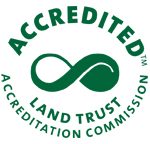It All Starts
With a raindrop
Communities are changing ordinances to minimize impervious area on a development site, require more infiltration of rainwater through pervious pavements and bioswales. Residents are installing rain barrels to collect and use rainwater and rain gardens to help soak water into the ground. Park districts are converting mowed grass areas into pollinator meadows that can absorb more rain water than turf grass. Not only can we soak more rainwater into the ground, we can also reduce the pollutants on the landscape so they do not end up in our streams by: Keeping our vehicles maintained so they do not leak oil or other fluids; Using fertilizers responsibly and sweeping excess off of the sidewalks; Minimizing winter salt use by shoveling first and using the right amount; Picking up dog poop and disposing properly; Keeping grass clippings and leaves out of storm sewers and away from stream corridors, wetlands or stormwater detention ponds.
What is a watershed?
A watershed is the area that drains to a common waterway, such as a stream, lake, estuary, wetland, aquifer, or even the ocean. There are over 2,110 watersheds in the continental US or 2,267 watersheds including Hawaii Alaska, and Puerto Rico. It doesn’t matter where you live, everyone lives in a watershed. Each watershed’s residents, businesses and industries are responsible for the health of the watershed’s water resources. The community must consider its actions and resulting impacts on water resources because “we all live downstream.” Careful planning and management with regard to water resources for flood control, fresh water supplies, recreation and stream health are important.
To find out what watershed you live in, click here.
How land is used throughout a watershed affects water quality
Development alters the land which changes the way water is transported and stored. Impervious surfaces (e.g. driveways, roads, sidewalks, rooftops, etc.) and compacted earth associated with development create barriers to rain and snowmelt infiltration. These alterations may also change the physical characteristics of a stream, thereby degrading habitat for aquatic life.
The results include:
- decreased water quality
- increased volume and velocity of runoff
- degradation of aquatic life habitat
- increased frequency and severity of flooding
- peak (storm) flows many times greater than in natural basins
- loss of natural stormwater storage capacity in vegetation, wetland, and soil
- reduced groundwater recharge
- decreased base flow (the groundwater contribution to stream flow)
Stormwater
Where does it go?
What kid (or adult) doesn’t enjoy splashing around in puddles of water left on the street after a heavy rainfall? But before long, the water flows away and the puddles are gone. Where does the water go?
In most urban areas, stormwater and snowmelt are directed towards storm drains. Many suburbs and newer communities have separate sewer systems for stormwater, which are the underground pipe systems designed to move water away from an area as quickly as possible.


The water is collected and transported by the separate sewer system which releases the untreated water to either a stormwater detention pond and then to a nearby stream or directly to the stream. These systems are owned and managed by a public entity, such as your village, county or state. Your tax dollars help pay to install and maintain these systems. These systems are regulated by the National Pollutant Discharge Elimination System (NPDES) Municipal Separate Storm Sewer System (MS4) Permit that is regulated by the Illinois Environmental Protection Agency.
Managing Stormwater
 In some older cities, stormwater is managed by combined sewer systems. Combined sewer systems collect stormwater, domestic sewage, and industrial wastewater in the same pipe. Most of the time, combined sewer systems transport all of their wastewater to a wastewater treatment plant, where it is treated and then discharged to nearby river or stream. However, during periods of heavy rainfall or snowmelt, the rate and volume can exceed the capacity of the sewer system or treatment plant. When this occurs, combined sewer systems are designed to overflow and discharge excess wastewater directly to nearby streams, rivers, or other water bodies. These overflows, called combined sewer overflows (CSOs), contain not only stormwater but also untreated human and industrial waste, toxic materials, and debris. They are a major water pollution concern for approximately 772 cities in the U.S. Approximately 100 cities in Illinois have combined sewer systems. Theses combined sewer systems and overflows are also regulated by the Illinois Environmental Protection Agency.
In some older cities, stormwater is managed by combined sewer systems. Combined sewer systems collect stormwater, domestic sewage, and industrial wastewater in the same pipe. Most of the time, combined sewer systems transport all of their wastewater to a wastewater treatment plant, where it is treated and then discharged to nearby river or stream. However, during periods of heavy rainfall or snowmelt, the rate and volume can exceed the capacity of the sewer system or treatment plant. When this occurs, combined sewer systems are designed to overflow and discharge excess wastewater directly to nearby streams, rivers, or other water bodies. These overflows, called combined sewer overflows (CSOs), contain not only stormwater but also untreated human and industrial waste, toxic materials, and debris. They are a major water pollution concern for approximately 772 cities in the U.S. Approximately 100 cities in Illinois have combined sewer systems. Theses combined sewer systems and overflows are also regulated by the Illinois Environmental Protection Agency.
Because the water that goes down the storm drain is untreated in most cases, it is important that “Only Rain Goes Down the Drain.” Adopt the storm drain outside your home, apartment or office and keep it free from trash, debris and yard waste. This will help to reduce the chance for localized flooding as well as to keep harmful pollutants out of our streams.One of the best ways to manage stormwater is to help catch and keep it where it falls. This can be a challenge in urban and suburban areas because there is so much impervious area like roads, roofs and parking lots that cannot absorb the water. Impervious areas increase the amount of stormwater and that rate that stormwater must be managed. Check out our
Rain Barrel and Rain Garden pages for more information on how you can help to reduce the amount of rainwater that runs off your property.
Dealing With
ice & snow
Every winter, we rely on municipal, state and county personnel and private snow removal contractors to keep our highways, streets, parking lots and walkways safe and clear of snow and ice. Every winter there is also increased expectations from the public to clear roads faster and have bare pavement as sooner. These expectations come with a big price tag – both in dollars and impacts to the environment and our infrastructure. But, more salt does NOT mean more safe. Excess rock salt hurts our environment and wastes money. When There is Ice & Snow – Take It Slow.
Rock salt, the most commonly used product for melting ice, contains primarily sodium chloride. Chloride is bad for our rivers and the things that live in them, it negatively impacts fish and bugs that live in the rivers, kills plants, and fouls drinking water. Chloride damages our concrete and steel infrastructure and our vehicles. Rock salt is also harmful to our pets – salt can burn and dry out dogs paws. Chloride levels in our rivers and groundwater are on the rise across northern Illinois. Once chlorides dissolve in water, chloride stays in the water, they don’t degrade or drop out. Traditional methods to filter other pollutants out of water don’t work on chlorides. The true cost of road salt goes well beyond the price of a bag or ton of salt. It makes sense to be Salt Smart and use just the right amount of salt.
Salt Smart Solutions


There are many well excepted best management practices that communities and private snow plow companies can use to be Salt Smart and still maintain expected levels of safety. Best management practices include:
- Proper salt storage and handling
- Annual calibration of all equipment
- Decision making based on weather forecasting and pavement temperature
- Selecting appropriate products and application rates for storm conditions
- Defined levels of service
- Comprehensive record keeping
- Using pre-wetted salt
- Anti-icing techniques
SAlt Smart tips for homeowners
As a homeowner you can do your part too by following the Salt Smart 5 steps. For more information and resources on winter deicing best management practices, visit www.saltsmart.org.
Did you know...
that rock salt stops working at temperatures below 15 degrees? Just 1 teaspoon of salt permanently pollutes 5 gallons of water!


